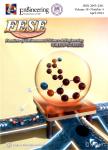Optimization and modeling of coagulation-flocculation to remove algae and organic matter from surface water by response surface methodology
作者机构:School of EnvironmentTsinghua UniversityBeijing 100084China Department of Chemical and Biochemical EngineeringWestern UniversityLondon Ontario N6A 5B9Canada Research Institute for Environmental Innovation(Suzhou)Tsinghua UniversitySuzhou 215163China School of Environmental Science and EngineeringSuzhou University of Science and TechnologySuzhou 215009China
出 版 物:《Frontiers of Environmental Science & Engineering》 (环境科学与工程前沿(英文))
年 卷 期:2019年第13卷第5期
页 面:115-127页
核心收录:
学科分类:083002[工学-环境工程] 0830[工学-环境科学与工程(可授工学、理学、农学学位)] 08[工学]
基 金:supported by the Ontario-China Research and Innovation Fund (OCRIF) supported by grants from the Mega-projects of Science Research for Water Environment Improvement
主 题:Algae Coagulation-flocculation Response surface methodology Artificial neural networks
摘 要:Seasonal algal blooms of Lake Yangcheng highlight the necessity to develop an effective and optimal water treatment process to enhance the removal of algae and dissolved organic matter (DOM). In the present study, the coagulation performance for the removal of algae, turbidity, dissolved organic carbon (DOC) and ultraviolet absorbance at 254 nm (UV254) was investigated systematically by central composite design (CCD) using response surface methodology (RSM). The regression models were developed to illustrate the relationships between coagulation performance and experimental variables. Analysis of variance (ANOVA) was performed to test the significance of the response surface models. It can be concluded that the major mechanisms of coagulation to remove algae and DOM were charge neutralization and sweep flocculation at a pH range of 4.66–6.34. The optimal coagulation conditions with coagulant dosage of 7.57 mg Al/L, pH of 5.42 and initial algal cell density of 3.83 × 106 cell/mL led to removal of 96.76%, 97.64%, 40.23% and 30.12% in term of cell density, turbidity, DOC and UV254 absorbance, respectively, which were in good agreement with the validation experimental results. A comparison between the modeling results derived through both ANOVA and artificial neural networks (ANN) based on experimental data showed a high correlation coefficient, which indicated that the models were significant and fitted well with experimental results. The results proposed a valuable reference for the treatment of algae-laden surface water in practical application by the optimal coagulation-flocculation process.



